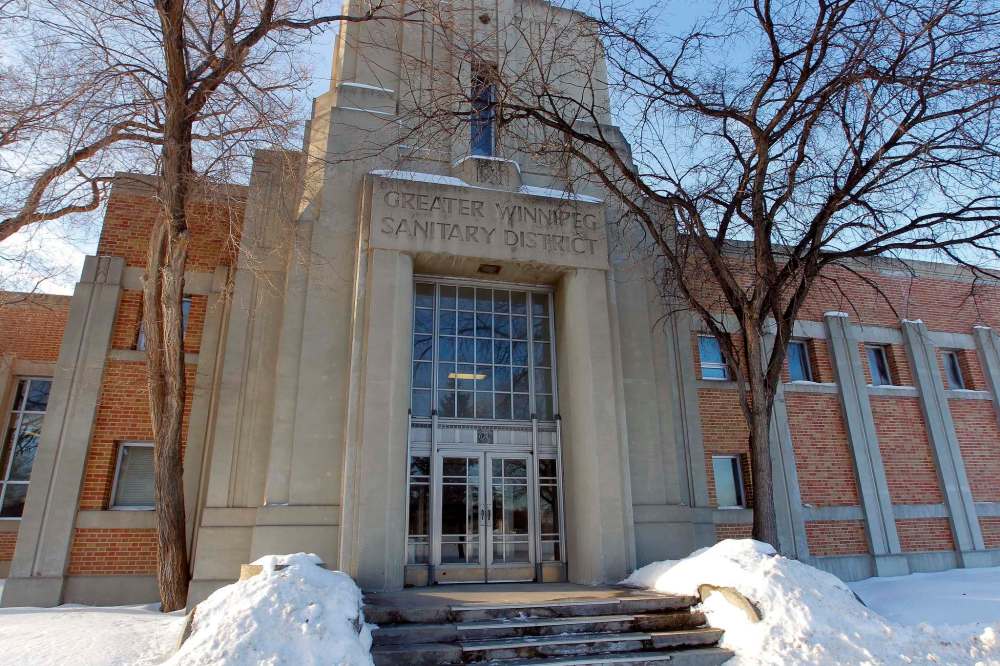Activists fume as city hall rejects solution to deal with phosphorus emissions
Advertisement
Read this article for free:
or
Already have an account? Log in here »
To continue reading, please subscribe:
Monthly Digital Subscription
$0 for the first 4 weeks*
- Enjoy unlimited reading on winnipegfreepress.com
- Read the E-Edition, our digital replica newspaper
- Access News Break, our award-winning app
- Play interactive puzzles
*No charge for 4 weeks then price increases to the regular rate of $19.00 plus GST every four weeks. Offer available to new and qualified returning subscribers only. Cancel any time.
Monthly Digital Subscription
$4.75/week*
- Enjoy unlimited reading on winnipegfreepress.com
- Read the E-Edition, our digital replica newspaper
- Access News Break, our award-winning app
- Play interactive puzzles
*Billed as $19 plus GST every four weeks. Cancel any time.
To continue reading, please subscribe:
Add Free Press access to your Brandon Sun subscription for only an additional
$1 for the first 4 weeks*
*Your next subscription payment will increase by $1.00 and you will be charged $16.99 plus GST for four weeks. After four weeks, your payment will increase to $23.99 plus GST every four weeks.
Read unlimited articles for free today:
or
Already have an account? Log in here »
Hey there, time traveller!
This article was published 26/09/2019 (2269 days ago), so information in it may no longer be current.
Environmental activists say they are again disappointed with Winnipeg city hall’s failure to deal with phosphorus emissions from the north end sewage treatment plant.
On Thursday, a narrow majority on city council rejected an attempt to implement interim measures proposed by the International Institute of Sustainable Development to curtail what has been identified as the single major contributor to toxic algae blooms on Lake Winnipeg.
Dimple Roy, IISD director of water management, and Alexis Kanu, executive director of the Lake Winnipeg Foundation, said city hall has failed to demonstrate it is taking any real action on the issue.

“Can the city do something in a specific time frame and specific action?” Roy said after a formal motion by Couns. Kevin Klein and Shawn Nason was defeated 9-7.
Klein, Nason and Coun. Jason Schreyer wanted council to over-rule a decision by the department, and have it test a procedure proposed by the IISD, which has been shown to reduce phosphorus emissions in other municipalities in Eastern Canada and the United States.
Klein said the IISD proposal — the use of ferric chloride to bind to and remove phosphorus from waste water — has proven effective in other municipalities and the city should implement it immediately.
“This is an inexpensive solution,” he said. “There is no excuse for not doing this right now. It has to be done.”
The proposal was later forwarded to council’s environment committee for further consideration.
The city is facing a Dec. 31 deadline to reduce emissions of phosphorus from its north end sewage treatment plant to one milligram per litre from the current level of 3.54 mg/L.
The IISD says on-site use of ferric chloride would reduce emissions by 70 per cent, bringing the facility into compliance. The proposal would have an initial cost of $3 million, with annual operating costs of $2 million.
The city had previously submitted a formal notice to the province requesting more time — simply to develop a new plan.
In a separate email to members of council in late July, a senior official from the water and waste department said nothing can be done in the interim to reduce phosphorus levels to comply with the Environment Act licence requirements.
The email, from acting director Tim Shanks, dismissed the IISD proposal, explaining it would result in a buildup of sludge that could compromise the operation of the plant.
Klein, Nason and Schreyer said a consulting firm hired by the city to examine alternative solutions had found merit in the IISD proposal. The councillors wanted the water and waste department to conduct tests on the process and, if successful, to implement it until a $828-million upgrade to the plant is complete.
While department officials said the consultant report concluded the IISD proposal wouldn’t work, the report by AECOM said the procedure could be effective, but required testing.
Mayor Brian Bowman said despite Thursday’s vote, the water and waste department will be testing alternative methods to reduce phosphorus emissions.
aldo.santin@freepress.mb.ca


